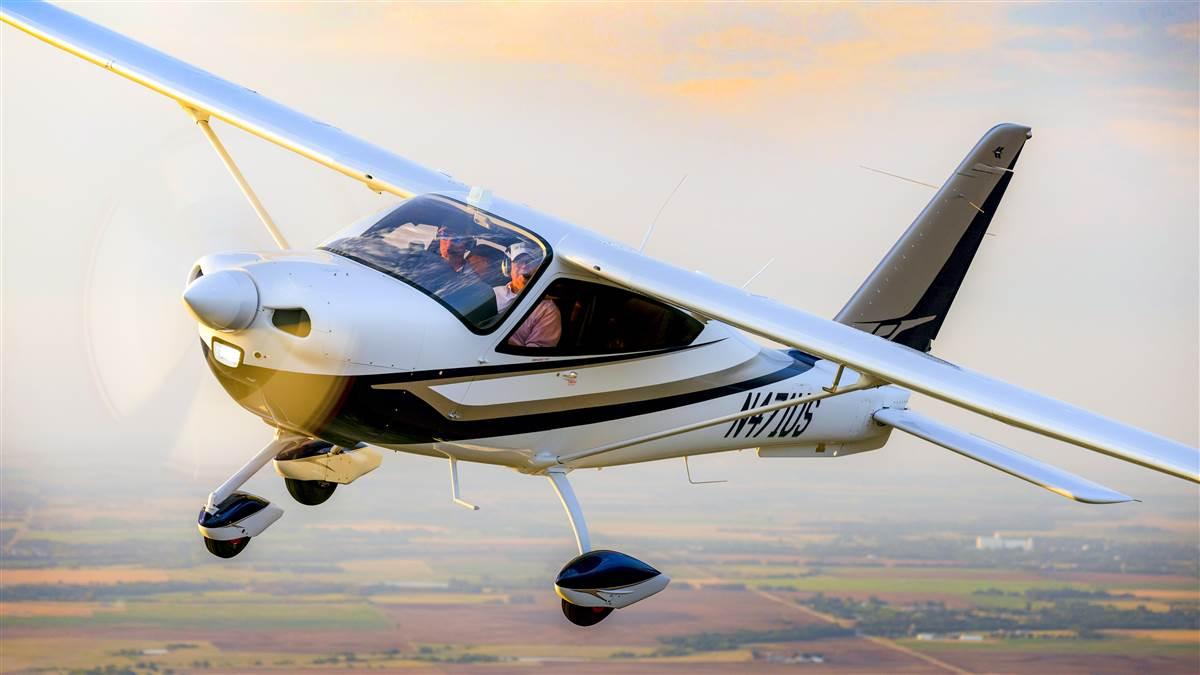The ultimate P2010
Good looks and high tech, matched with an opulent interior

Take Tecnam’s new Gran Lusso (translated: “Grand Luxury”), unveiled at EAA AirVenture Oshkosh this past summer. It’s the latest in the Italian manufacturer’s P2010 line of high-wing, fixed-gear four-seaters, and the most ambitious. That goes double for the Gran Lusso’s swanky leather interior, which its brochure assures us is “cool, with a flair for beauty and Dolce Vita.”
features




That’s a fair statement because the seats are comfortable, the interior trim distinctive, the ergonomics exemplary, and it’s roomy, too. The front seats can be raised or lowered by means of an electric motor; the parking brake and rudder trim controls are conveniently located at the aft end of the center console; and a tasteful, leather-trimmed shelf runs from door to door and across the subpanel. There’s also a separate aft door that gives passengers easy access to the rear seats and roomy baggage compartment. One look at the Gran Lusso’s interior and you realize that in terms of unity of design and attention to detail, its cabin surpasses those of competing piston singles.
Its exterior lines are sleek and its surfaces clean—save for the vortex generators on the vertical stabilizer. So while other strut-braced, fixed-gear single airframes may look dated and angular, the P2010 is a study in slipperiness. One goal was to keep the doors flush with the airframe for both drag and noise reduction. So to keep them snugly fit, there are three latches around their perimeters.
Front office and more






My chance to fly the Gran Lusso came in the middle of the airplane’s demonstration tour in August. Wichita, Kansas, was just coming off one of its famous 100-degree-plus heat waves, and surface temperatures were pushing 90 degrees. I hopped into the left seat, and Tecnam demo pilot Michael Jackson got aboard as I was searching for the glow plug pushbutton for the Continental CD-170 turbodiesel engine. Because they don’t have spark plugs and instead use the heat of piston compression for ignition, diesels use glow plugs to heat up their combustion chambers. Usually there’s a dedicated pushbutton, which you hold down until you get an annunciation that the cylinders are warm enough to fire up by turning on the starter motor.
With the CD-170, there’s a single pushbutton that combines glow plug and starter functions. You just push the starter button, and the glow plug heats up while the engine turns. In about three to five seconds the engine lights off. After that, engine management is pretty much automatic, thanks to the dual-channel FADEC. There’s a single power lever, no propeller rpm lever, and no mixture control. Instead, the FADEC controls run the show, keeping the engine within operating limitations and providing the proper mixture for ambient conditions and the power setting you’ve selected.
To maximize power, efficiency, and fuel economy, the Gran Lusso’s four-cylinder, 170-horsepower Continental CD-170 engine burns Jet A and regular diesel fuel (testing for sustainable aviation fuel use is in the works) and has a turbocharger and common rail fuel injection. For cooling, there’s an intercooler to tame the turbo’s hot intake air and liquid coolant for the engine block. If the coolant overheats you get an annunciation, and on this steamy day we saw it briefly.
Details




Up at 6,500 feet, power was set for maximum cruise (90 percent), airspeed settled down to 137 KTAS, and the fuel burn was 8.7 gph. Then again, it was a toasty 19 degrees Celsius/ISA plus 17 Celsius. At long-range cruise power—63 percent—we saw 122 KTAS burning 5.5 gph. Tecnam advertises a long-range cruise of 115 KTAS at 60 percent power and 9,000 feet, burning 5.2 gph. With a 64-gallon fuel capacity, this can translate into an impressive still-air range of some 1,000 nautical miles, assuming a light load and standard conditions.
For someone new to the P2010s, I’d say there are two rather modest learning curves. One is the airplane’s free-castering nosewheel. For taxiing, you need to steer using differential braking. The nosewheel isn’t connected to the rudder pedals, so it’s just along for the ride. You’ll get the hang of it in short order—especially if you have time in other free-castering types, like Grumman singles.
The other quirk relates to the airplane’s aerodynamic efficiency. This helps explain why so little power is needed in the pattern. A 25-percent power setting, which seemed awfully low at the time, gave a normal descent rate on final. All this speaks to the P2010’s low drag; too much power means less sink and more airspeed on final. Instead of the target 75 knots, you could easily find yourself pushing 90 knots if power is left at, say, 50 percent.
Tecnam says the Gran Lusso is simple enough to serve as a trainer, yet capable enough to be a respectable cross-country machine. At a base price of $626,750, it ain’t cheap, but neither are competing singles. Besides, customers buying new airplanes these days are looking for new technology and innovation, and are willing to pay for things like FADEC-controlled turbodiesels, Garmin G1000NXi panels with an autopilot, plus electronic stability protection (ESP) and a Level button to stay within the flight envelope. All of which is standard in P2010s. Then there’s the whole luxury thing. At this year’s AirVenture a Tecnam spokesman said that orders were taken for 20 Gran Lussos.
Tecnam appears to be on a roll of late. In 2021 it introduced its new P2012 Traveller, a big piston twin. Then came its P-Mentor, a two-seat IFR trainer. An electrically powered version of the P2012 is in the works under a partnership with Rolls-Royce, as is the P2010 H3PS, a hybrid-power design that uses a Rotax 915 iS teamed with a Rolls-Royce electric motor. It seems Tecnam has all the bases covered.



